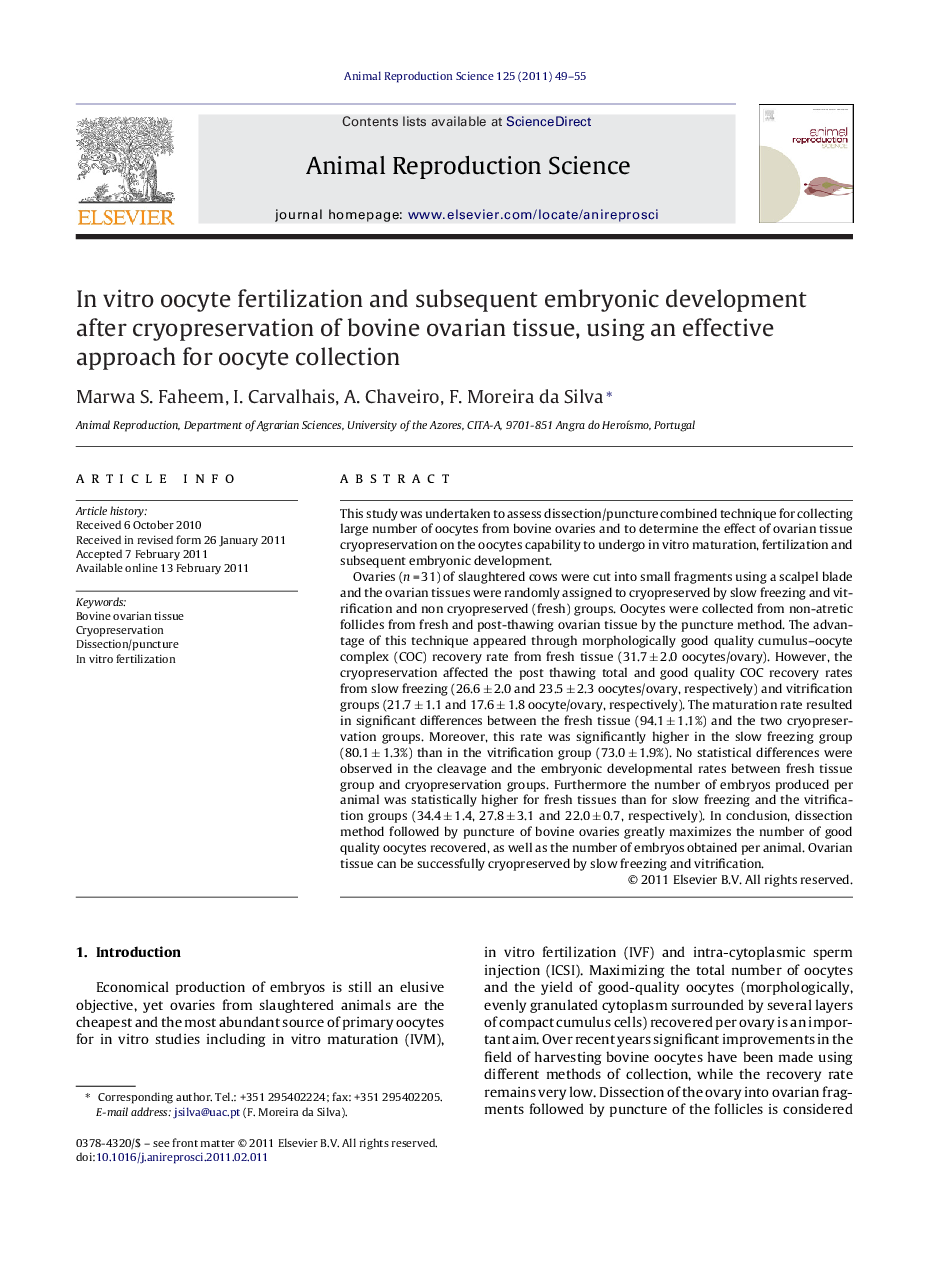| کد مقاله | کد نشریه | سال انتشار | مقاله انگلیسی | نسخه تمام متن |
|---|---|---|---|---|
| 2073435 | 1544773 | 2011 | 7 صفحه PDF | دانلود رایگان |

This study was undertaken to assess dissection/puncture combined technique for collecting large number of oocytes from bovine ovaries and to determine the effect of ovarian tissue cryopreservation on the oocytes capability to undergo in vitro maturation, fertilization and subsequent embryonic development.Ovaries (n = 31) of slaughtered cows were cut into small fragments using a scalpel blade and the ovarian tissues were randomly assigned to cryopreserved by slow freezing and vitrification and non cryopreserved (fresh) groups. Oocytes were collected from non-atretic follicles from fresh and post-thawing ovarian tissue by the puncture method. The advantage of this technique appeared through morphologically good quality cumulus–oocyte complex (COC) recovery rate from fresh tissue (31.7 ± 2.0 oocytes/ovary). However, the cryopreservation affected the post thawing total and good quality COC recovery rates from slow freezing (26.6 ± 2.0 and 23.5 ± 2.3 oocytes/ovary, respectively) and vitrification groups (21.7 ± 1.1 and 17.6 ± 1.8 oocyte/ovary, respectively). The maturation rate resulted in significant differences between the fresh tissue (94.1 ± 1.1%) and the two cryopreservation groups. Moreover, this rate was significantly higher in the slow freezing group (80.1 ± 1.3%) than in the vitrification group (73.0 ± 1.9%). No statistical differences were observed in the cleavage and the embryonic developmental rates between fresh tissue group and cryopreservation groups. Furthermore the number of embryos produced per animal was statistically higher for fresh tissues than for slow freezing and the vitrification groups (34.4 ± 1.4, 27.8 ± 3.1 and 22.0 ± 0.7, respectively). In conclusion, dissection method followed by puncture of bovine ovaries greatly maximizes the number of good quality oocytes recovered, as well as the number of embryos obtained per animal. Ovarian tissue can be successfully cryopreserved by slow freezing and vitrification.
Journal: Animal Reproduction Science - Volume 125, Issues 1–4, May 2011, Pages 49–55